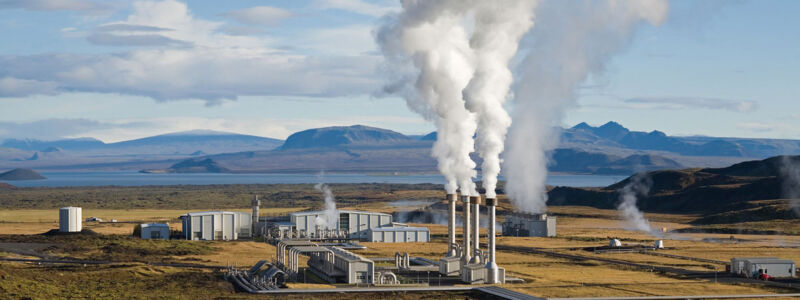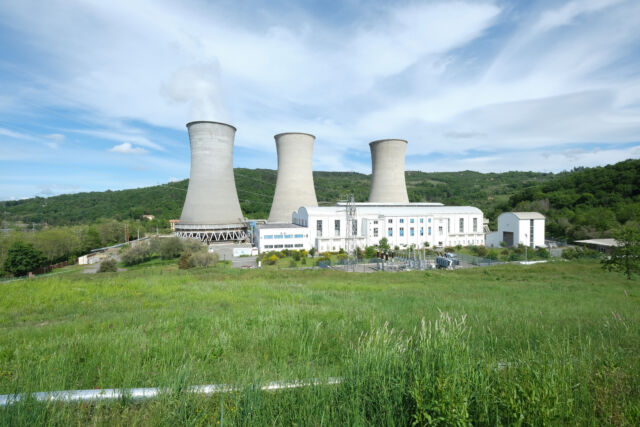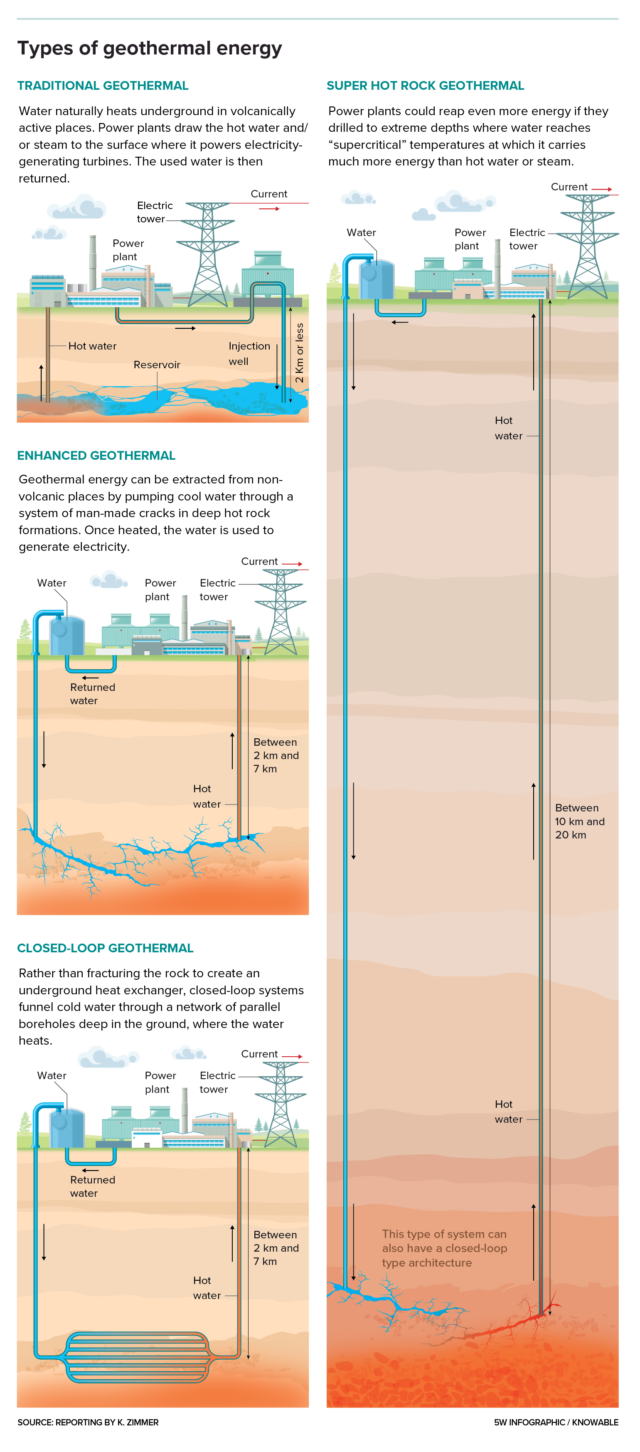
Glistening in the dry expanses of the Nevada desert is an unusual kind of power plant that harnesses energy not from the sun or wind, but from the Earth itself.
The site, known as Project Red, it pumps water thousands of feet into the ground, down where rocks are hot enough to roast a turkey. Around the clock, the structure sucks the heated water back up; it is then used to power generators. Since last November, this carbon-free, Earth-borne power has been flowing onto a local grid in Nevada.
Geothermal energy, though it’s continuously radiating from Earth’s super-hot core, has long been a relatively niche source of electricity, largely limited to volcanic regions like Iceland where hot springs bubble from the ground. But geothermal enthusiasts have dreamed of sourcing Earth power in places without such specific geological conditions—like Project Red’s Nevada site, developed by energy startup Fervo Energy.
Such next-generation geothermal systems have been in the works for decades, but they’ve proved expensive and technologically difficult, and have sometimes even triggered earthquakes. Some experts hope that newer efforts like Project Red may now, finally, signal a turning point, by leveraging techniques that were honed in oil and gas extraction to improve reliability and cost-efficiency.
The advances have garnered hopes that with enough time and money, geothermal power—which currently generates less than 1 percent of the world’s electricity, and 0.4 percent of electricity in the United States—could become a mainstream energy source. Some posit that geothermal could be a valuable tool in transitioning the energy system off of fossil fuels, because it can provide a continuous backup to intermittent energy sources like solar and wind. “It’s been, to me, the most promising energy source for a long time,” says energy engineer Roland Horne of Stanford University. “But now that we’re moving towards a carbon-free grid, geothermal is very important.”
A rocky start
Geothermal energy works best with two things: heat, plus rock that is permeable enough to carry water. In places where molten rock sizzles close to the surface, water will seep through porous volcanic rock, warm up and bubble upward as hot water, steam, or both.
If the water or steam is hot enough—ideally at least around 300 degrees Fahrenheit—it can be extracted from the ground and used to power generators for electricity. In Kenya, nearly 50 percent of electricity generated comes from geothermal. Iceland gets 25 percent of its electricity from this source, while New Zealand gets about 18 percent and the state of California, 6 percent.
Some natural geothermal resources are still untapped, such as in the western United States, says geologist Ann Robertson-Tait, president of GeothermEx, a geothermal energy consulting division at the oilfield services company SLB. But by and large, we’re running out of natural, high-quality geothermal resources, pushing experts to consider ways of extracting geothermal energy from areas where the energy is much harder to access. “There’s so much heat in the Earth,” Robertson-Tait says. But, she adds, “much of it is locked inside rock that isn’t permeable.”

Tapping that heat requires deep drilling and creating cracks in these non-volcanic, dense rocks to allow water to flow through them. Since 1970, engineers have been developing “enhanced geothermal systems” (EGS) that do just that, applying methods similar to the hydraulic fracturing—or fracking—used to suck oil and gas out of deep rocks. Water is pumped at high pressure into wells, up to several miles deep, to blast cracks into the rocks. The cracked rock and water create an underground radiator where water heats before rising to the surface through a second well. Dozens of such EGS installations have been built in the United States, Europe, Australia, and Japan—most of them experimental and government-funded—with mixed success.
Famously, one EGS plant in South Korea was abruptly shuttered in 2017 after having probably caused a 5.5-magnitude earthquake; fracking of any kind can add pressure to nearby tectonic faults. Other issues were technological—some plants didn’t create enough fractures for good heat exchange, or fractures traveled in the wrong direction and failed to connect the two wells.
Some efforts, however, turned into viable power plants, including several German and French systems built between 1987 and 2012 in the Rhine Valley. There, engineers made use of existing fractures in the rock.
But overall, there just hasn’t been enough interest to develop EGS into a more reliable and lucrative technology, says geophysicist Dimitra Teza of the energy research institute Fraunhofer IEG in Karlsruhe, Germany, who helped develop some of the Rhine Valley EGS systems. “It has been quite tough for the industry.”

reader comments
203